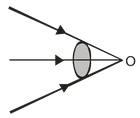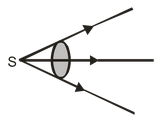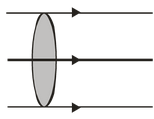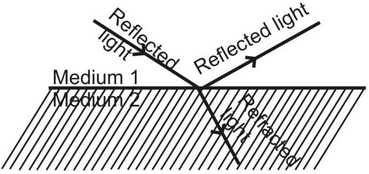
Some Important Terms Related With Light
Light of Class 10
ELECTROMAGNETIC WAVES
The waves which do not require a material medium for their propagation are known as electromagnetic waves. e.g. All light waves are electromagnetic waves.
SOURCE OF LIGHT:
A body which emits light in all directions is said to be the source of light. The source can be a point source one or an extended one. The sources of light are of two types:
(i) Luminous source : Any object which by itself emits light is called as a luminous source. e.g. Sun and Stars (natural Luminous sources), Electric lamps, Candles and Lanterns (artificial luminous sources).
(ii) Non-luminous source : Those objects which do not emit light but become visible when light from luminous objects falls on them and they reflect it back. They are called non-luminous. e.g. Moon, Planets (natural non-luminous sources), Wood, Table (artificial non-luminous sources).
TYPES OF MEDIUM:
When light falls on a medium, it can be treated in three ways.
A medium is a substance through which light propagates or tries to do so. Based on this interaction mediums are classified into three categories.
- Transparent: The medium which allows most of the light to pass through it is called a transparent medium. e.g. Air, Water, Glass etc.
- Translucent: The medium which allows only a part of the light to pass through it is called a translucent medium. e.g. Paper, Ground glass etc.
- Opaque: The medium which does not allow any light to pass through it is called opaque medium. e.g. Wood, Bricks, Metals etc.
RAY:
A ray of light is the straight line path along which the light travels. It is represented by an arrow head on a straight line
 . The direction of arrow gives the direction of propagation of light.
. The direction of arrow gives the direction of propagation of light.
BEAM OF LIGHT
A group of parallel rays is called a beam of light. It is also called a pencil of light.
A pencil of light or a beam of light may be of three types.
- Convergent pencil
- Divergent Pencil
- Parallel Pencil
Convergent Pencil
Convergent pencil is also known as convergent beam of light. In this case, as the beam of light progresses the rays converge to a point.
Or
A convergent Pencil is that in which rays of light propogate to meet at a particular point say O as shown in the figure.

Convergent Pencil
The diameter of the pencil goes on decreasing as the rays proceed forward.
Divergent Pencil
Divergent pencil is also known as divergent beam of light. Here, as the beam of light progresses, the rays diverge from each other.
Or
A divergent pencil is that in which rays of light come out of a point source such that the diameter of the pencil goes on increasing as the rays proceed forward, as shown in the figure.

Divergent Pencil
Parallel Pencil
Parallel pencil is that in which all the rays move parallel to one another. The diameter of the pencil remains constant throughout as shown in the figure 3.

Parallel Pencil
BEHAVIOUR OF LIGHT AT THE INTERFACE OF TWO MEDIA:
When light traveling in one medium falls on the surface of a second medium the following three effects may occur :
- A part of the incident light is turned back into the first medium. This process is called the reflection of light.
- A part of the incident light is transmitted into the second medium along a changed direction. This is called refraction of light.
- The remaining third part of light energy is absorbed by the second medium. This is called absorption of light.





